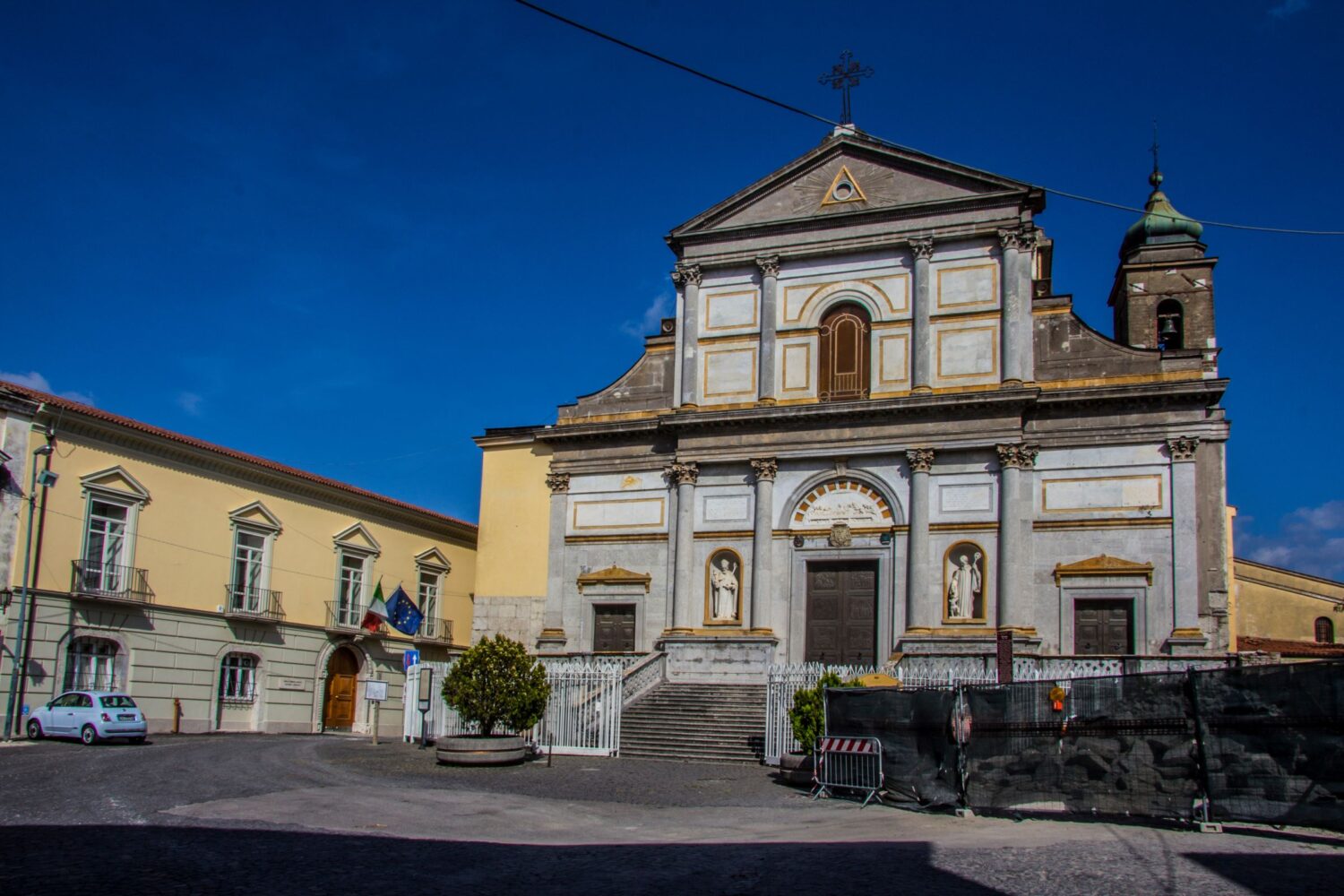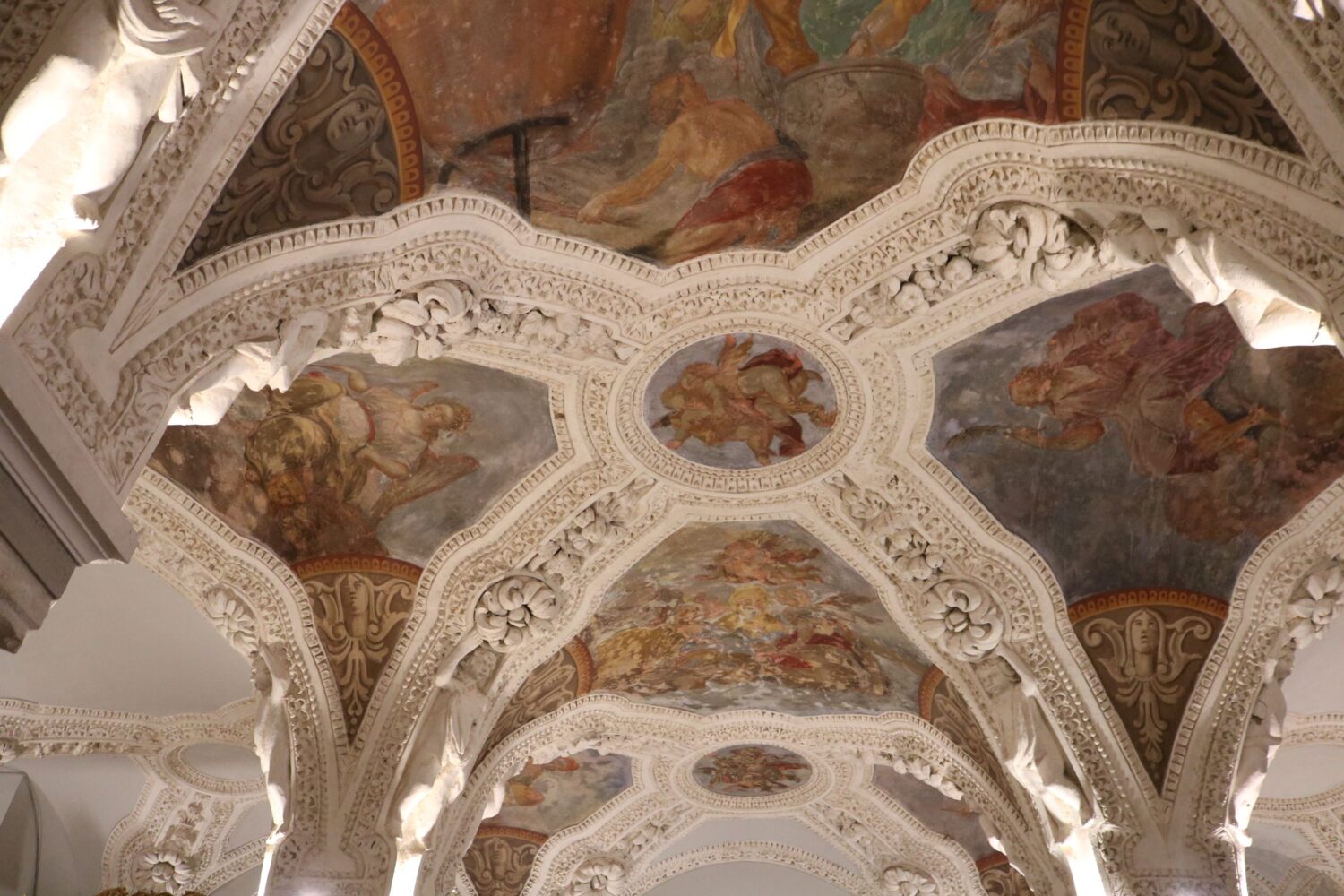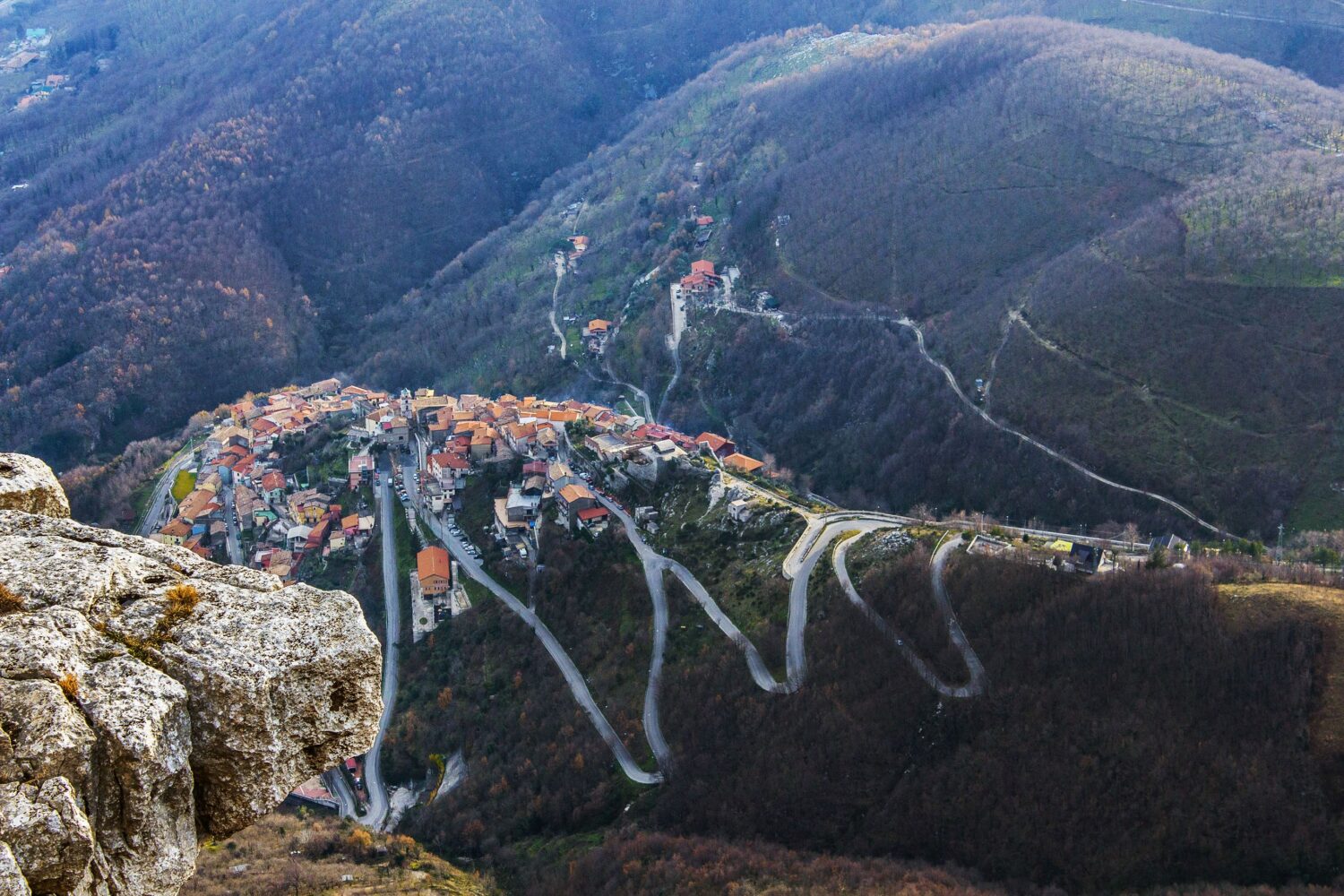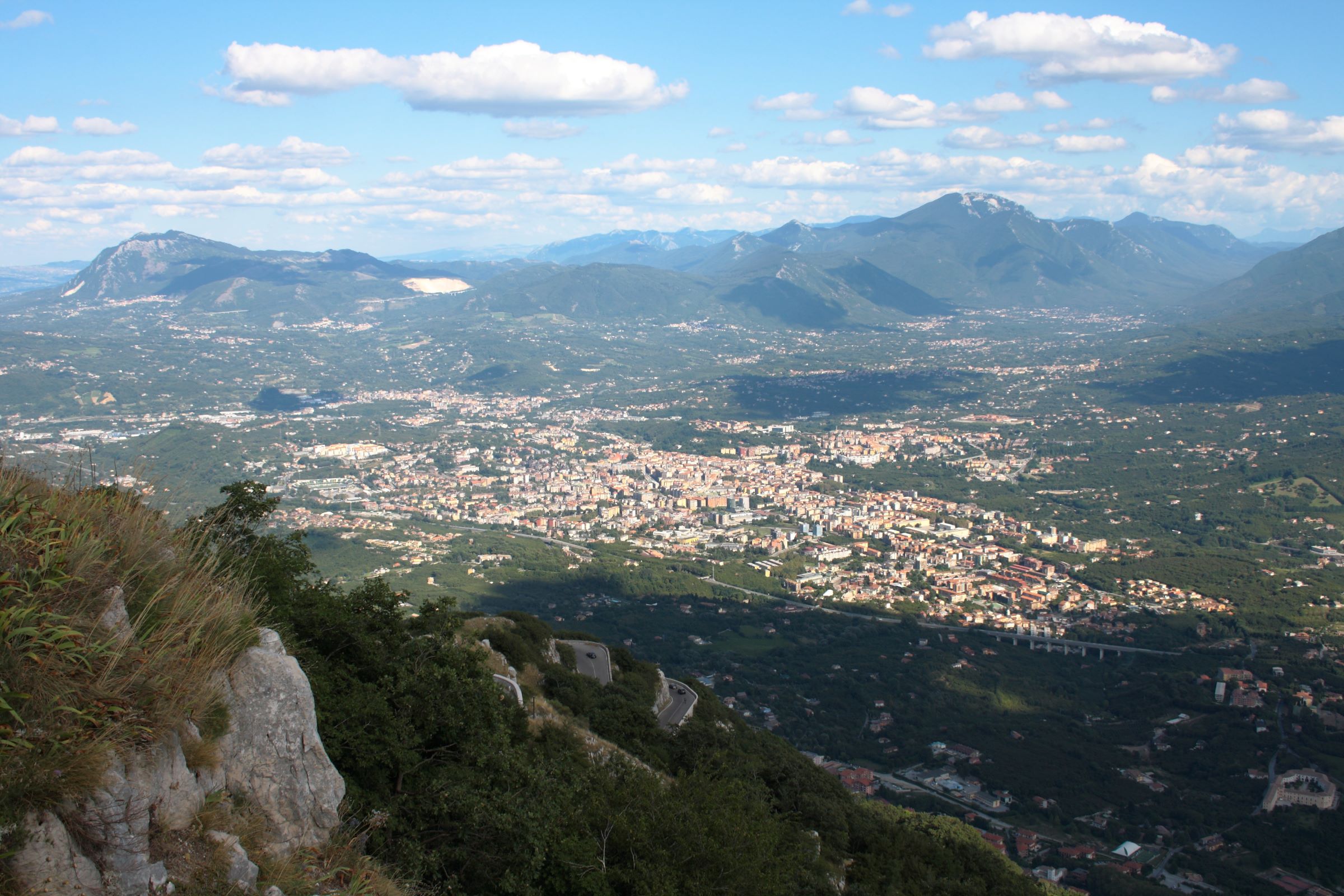Reading time: 5 minutes
Avellino, the capital of the geographical region of Irpinia, is a city rich in history, culture, and natural beauty. From Roman remains to medieval charm, from mountain landscapes to picturesque villages, Avellino offers a variety of experiences for just about every visitor.
What to See in the Historic Center
Avellino’s Cathedral
The religious heart of the city, with its imposing Baroque facade and Romanesque crypt, is located at the highest point of the city. It has very ancient origins dating back to the 12th century but over the years, has been rebuilt several times between earthquakes, invasions and bombings. The facade as seen today with its basalt, marble and alabaster stone is the result of a major renovation in the 19th century.
The crypt, however, dates back to the 6th century AD and it is a true gem not to be missed. Divided into three naves, there are 14 exquisitely sculpted columns, each different from the other.

The Bellerofonte Fountain
Near the Duomo, along Corso Umberto, there is the beautiful Bellerofonte fountain. It was commissioned in 1669 by Prince Francesco Marino Caracciolo. The statue of Bellerophon depicts the Greek hero killing the Chimera. Water from Mount Partenio spews out of the three mouths at the bottom, called the tre cannuoli.
Museo Irpino
This extensive museum houses archaeological finds from prehistory to Roman times and works of art that tell the story of the city and the territory. The museum is divided into sections including Prehistory; the Bronze and Iron Ages; the Roman period; artists from Irpinia; the Renaissance; and modern art.
Visit the official website for details about museum hours and tickets.
Corso Vittorio Emanuele
One of Avellino’s main streets is perfect for walking and shopping and ideal for trying out the area’s famous dishes and wines.
The first courses to keep in mind are fusilli avellinesi served with meat sauce or simply with tomato. Then there is a dish so rich that it serves as a first and second course, stuffed lasagna with a filling of meat sauce, hard-boiled eggs, mozzarella, ricotta, sausage and grated cheese. Speaking of cheese, don’t miss your chance to try Carmasciano which is only produced in a small area of upper Irpinia. Since ancient times the area has been known for the production of hazelnuts, “Nocciola Avellana”, from which a delicious nougat (torrone) is made.
Avellino boasts three DOCG wines: Greco di Tufo (white), Taurasi (red), and Fiano di Avellino (white).
Villa Amendola
Villa Amendola is an 18th-century public park with a panoramic view of the city, where you can admire the caves that were used by the population as shelter during the heavy bombings of 1943.
The “Dogana dei Grani”
Between Naples and Puglia there was the ancient Via del Grano and right in Avellino in Piazza Amendola, was the “customs” where grains and other goods were sorted, priced, and traded beginning in the Middle Ages.
“Cunicoli Longobardi”
As in many ancient cities and villages, there is an underground Avellino, a complex system of streets and tunnels dug into the tuff rock. In various periods of the city’s history, this world apart played a very important role, often saving its people from invasions and even the plague.

Avellino Sotterranea offers guided visits of the “underground” including the Cunicoli Longobardi, the Grotte di Villa Amendola, the Duomo Crypt, the San Biagio Crypt and the Ipogeo della Casina del Principe.
Bourbon Prison Complex
An example of 19th-century penitentiary architecture used as a venue for cultural events today.
More to See Near Avellino
- Montevergine Abbey: an important place of religious worship, located 1270 meters above sea level, with a magnificent view of the Partenio.
- WWF Oasis of Conza della Campania: a protected area of great naturalistic value, where you can admire various species of animals and plants.
- Lake Laceno: a mountain lake of volcanic origin, surrounded by woods and meadows, ideal for excursions and picnics.
- Ariano Irpino: a medieval village with a well-preserved historic center, where you can visit the Norman Castle and the Cathedral.
- Monte Terminio: the highest mountain in the Campania Apennines, with panoramic paths and ski slopes.

Avellino is a trip not to be missed to discover the beauty of Campania and the authenticity of Irpinia.


